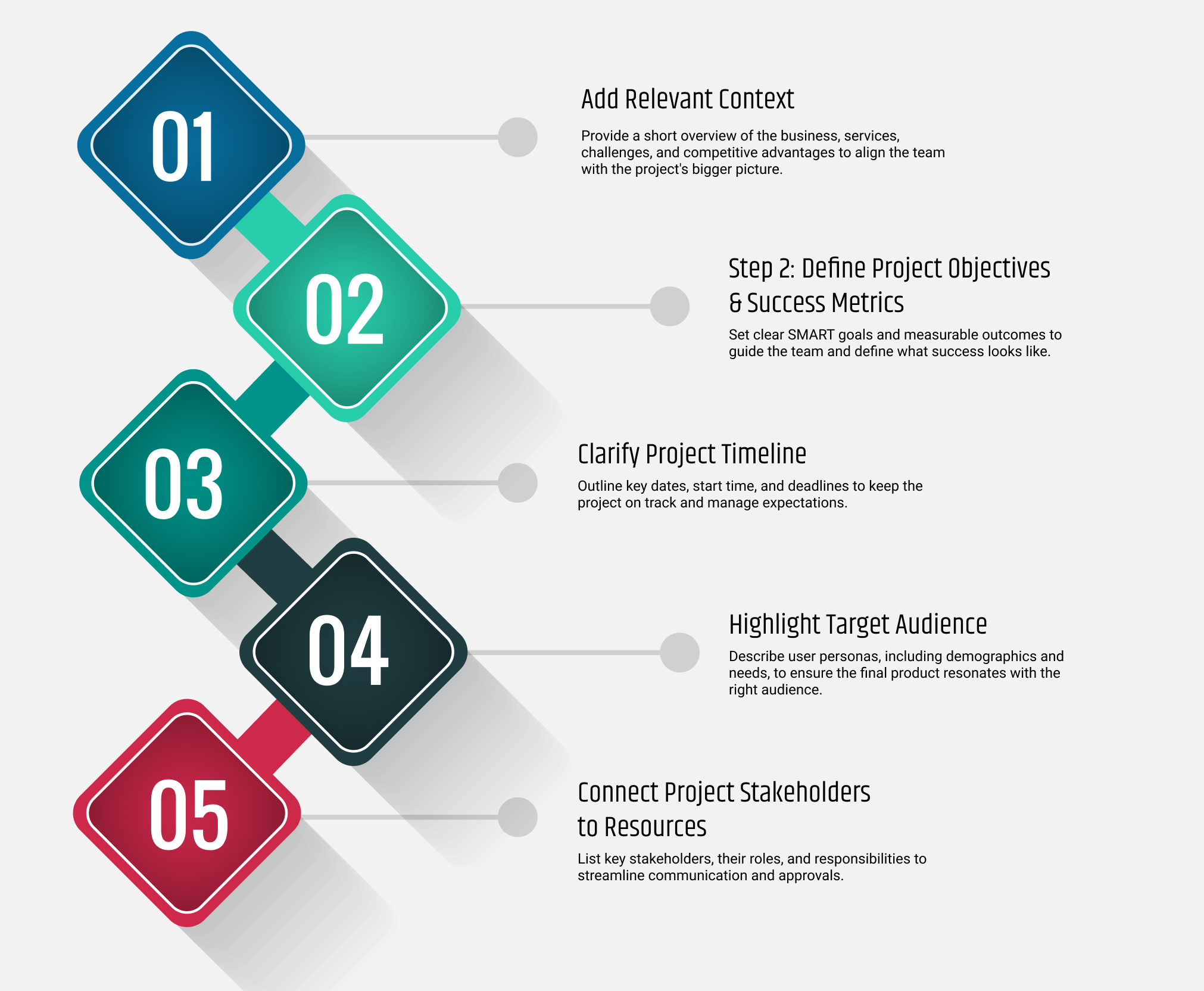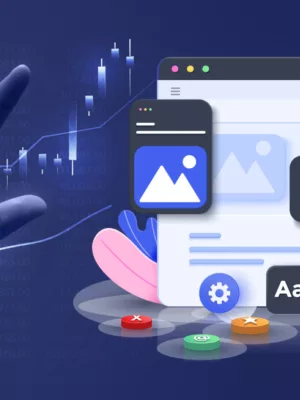
To write a winning scope of work that secures client approval, provide comprehensive business context, establish clear objectives with measurable outcomes, set realistic timelines, detail specific target audiences, and identify all project stakeholders and their roles.
Having brilliant ideas for digital solutions is only half the journey. The critical second part involves clearly communicating project purposes and components to development teams in a way that secures client approval. A well-crafted scope of work doesn't just outline project details—it convinces clients to move forward with confidence. Despite seeming straightforward, insufficient information during early stages frequently leads to misunderstandings, inaccurate estimates, missed deadlines, and ultimately, rejected proposals or project failures.
According to a Project Management Institute (PMI) study, 39% of projects fail due to unclear project objectives and poor requirement gathering, emphasizing the importance of a well-defined scope. Creating a detailed, comprehensive scope of work helps prevent becoming part of this statistic and significantly increases the chances of winning client approval.
At Convergine, we've seen firsthand what works and what doesn't across our 300+ completed projects. When clients keep coming back at a 95% retention rate, you learn a thing or two about effective scope documents. We're opening up our playbook here—these five steps are the exact methodology we use to win approvals and deliver successful projects day after day.
But before diving into our five-step process, let's establish what a scope of work is and why it matters for project success.
What is a Scope of Work?
A scope of work (SoW) is a formal document that clearly defines all aspects of a project, including deliverables, deadlines, work activities, and expectations between a client and service provider. It serves as both a roadmap and a contract, establishing boundaries for what is and isn't included in the project.
This foundational document outlines what products or services are needed, their purpose, context, all requirements and components, and the project timeline. Providing potential clients with a technically accurate, thoroughly considered, and descriptive SoW drives numerous advantages:
- Precise financial and time estimates
- Predictable project outcomes
- Optimized delivery timeframes and costs
- Elimination of ambiguity during development
- Clear guidance throughout the project lifecycle
The SoW essentially functions as a persuasive roadmap, giving all parties a clear understanding of project expectations, deliverables, and timelines before work begins.
The following five essential steps create a scope of work that consistently secures client approval and sets projects up for success.
5 Essential Steps to Write a Winning Scope of Work

The process of creating an effective scope of work follows five critical steps. Each contributes to a comprehensive document that sets clear expectations and provides necessary guidance for project success.
Step 1: Add Relevant Context
The first step involves providing background information about the business, services, current challenges, competitive landscape, and unique selling propositions. This context helps development teams understand not just the project requirements but also the broader business environment.
For example, a travel agency seeking website development should describe their existing business model, how they plan travel itineraries, their achievements, market position, and what distinguishes them from competitors.
This context enables developers to align their work with business goals and understand the strategic importance of the project.
We've found that once you've established solid context, your next move should absolutely be defining what success looks like—both for you and the client.
Step 2: Define Project Objectives & Success Metrics
This section requires explaining what solution is expected and detailing specific goals to be achieved. Project objectives should be specific, measurable, achievable, relevant, and time-bound (SMART).
Continuing with the travel agency example, objectives might include creating a website that attracts visitors, provides details about various incoming tours, and facilitates trip bookings. Success metrics might include visitor numbers, conversion rates, and booking volumes.
Clear objectives and metrics provide direction for development teams and establish criteria for evaluating project success.
With objectives established, the timeline provides structure for project execution.
Step 3: Clarify Project Timeline
The third step involves outlining estimated timeframes for deliverables. This includes specifying when the project should start and identifying deadlines for completion.
Timeframes should balance business needs with realistic development requirements. For urgent projects, flexibility regarding investment might be necessary to meet compressed schedules.
Detailed timelines help prevent scope creep and ensure all parties understand delivery expectations.
While knowing when the project will be completed, understanding who it serves remains equally important.
Step 4: Highlight Target Audience
Defining the target audience provides crucial insights for design and development decisions. The SoW should outline relevant audience profiles with demographic and psychographic information.
For a travel website, this might include defining multiple persona profiles with age ranges, regions, genders, locations, pain points, needs, and preferences. This information helps create user experiences tailored to actual customer needs.
Detailed audience profiles enable developers to create solutions that resonate with end-users and fulfill their specific requirements.
After defining the audience, identifying the decision-makers completes the human element of the project framework.
Step 5: Connect Project Stakeholders to Resources
The final step involves outlining all stakeholders involved in project development and their roles at various stages. This includes specifying decision-makers, reviewers, approvers, subject matter experts, and other key personnel.
Accurate stakeholder information helps establish communication channels and approval processes. Failure to provide this information often results in project delays due to unclear decision-making hierarchies.
Additional elements might be included depending on project specifics. For website development, technical requirements, visual style preferences, and layout guidelines might be relevant additions.
While following these five steps creates a strong foundation, understanding common pitfalls helps avoid costly mistakes in the scope of work creation process.
Common Scope of Work Mistakes to Avoid
Let's talk about the pitfalls we see project managers stumble into repeatedly. Some would think that these are just minor issues, but in reality, they're scope-killers that we've watched derail otherwise promising projects:
- Lack of precision: Focus on custom and complex functionality rather than defining too many generic goals
- Confusing communication: Be specific about technical requirements and user personas to prevent ambiguity
- Unrealistic expectations: Include practical, achievable outcomes to prevent mid-project frustrations
- Inflexibility: Allow vendors to suggest improvements to expected outcomes, potentially leading to better solutions
These common mistakes often contribute to project delays, budget overruns, and disappointing results. When scope documents lack clarity or contain unrealistic parameters, development teams struggle to deliver satisfactory outcomes. A vague or inflexible scope of work creates a cascade of problems—from inaccurate resource allocation to missed deadlines and ultimately client dissatisfaction.
Taking time to review the scope document through both client and vendor perspectives helps identify potential issues before they escalate into costly project complications. The most successful scopes strike a balance between comprehensive detail and adaptable frameworks that allow for professional collaboration.
Conclusion
We've seen it time and again in our projects: a well-crafted scope of work makes all the difference between success and frustration. By following these five essential steps—adding relevant context, defining objectives, clarifying timelines, highlighting target audiences, and connecting stakeholders—you're not just creating a document; you're building a foundation for project success.
In our experience working with hundreds of clients, this structured approach consistently minimizes risks, prevents costly misunderstandings, and dramatically increases the likelihood of successful outcomes. It's not complicated, but it does require discipline and attention to detail.
The most effective scopes of work we've developed strike that crucial balance: specific enough to provide clear direction while remaining flexible enough for professional input. When we focus on technical details from key components to minor features, we create alignment between all parties and establish realistic expectations from day one.
Ready for Project Success?
Convergine specializes in creating digital solutions based on clear, effective project scopes. With expertise in website development, app creation, and digital transformation, the team delivers results that exceed expectations. Contact us today to discuss project needs and discover how a well-defined scope of work can transform ideas into reality.







